India Mahdavi ‘honoured’ share double billing with Pierre Bonnard at NGV
The designer famous for a pink London restaurant interior one WAG described as like “getting drunk inside a vagina” is bringing her bold style to the NGV.

VWeekend
Don't miss out on the headlines from VWeekend. Followed categories will be added to My News.
Pairing renowned designers with major 20th-century painters is quite the thing on the international art scene.
Witness fashion guru Paul Smith’s current makeover of the Picasso Museum in Paris.
The National Gallery of Victoria was at the vanguard when, before Covid, it commissioned India Mahdavi to do the scenography for its Pierre Bonnard Winter Masterpieces exhibition.
Mahdavi, labelled the “queen of colour”, is the hottest architect and designer in the world right now.
The 61 year old has a resume that includes eye-popping fit-outs of hotels, restaurants, bars, fashion boutiques, and private residences as well as her own furniture (including the famed Bishop stool and Charlotte armchair), homewares, and even a paint line.
No wonder the NGV has given Mahdavi equal billing for the world-premiere of Pierre Bonnard: Designed by India Mahdavi.
The exhibition, done in partnership with the Musee d’Orsay, features more than 100 works by Bonnard enveloped in lush Mahdavi-designed settings.
“Showing in a museum is important and I am very honoured. I have a special affection for Australia,” Mahdavi says.
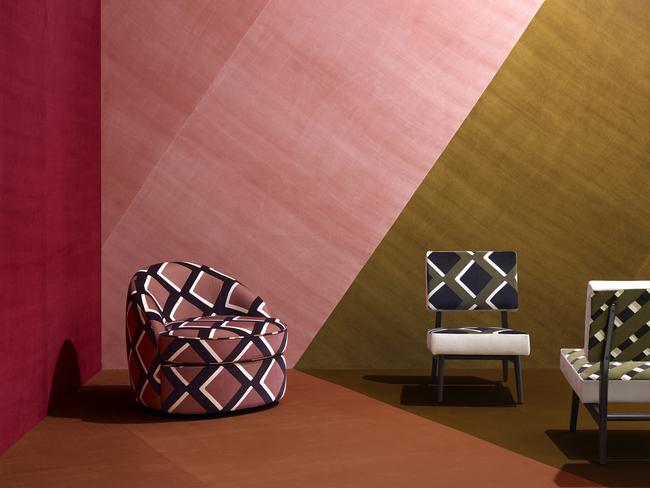
Mahdavi is based in Paris. Her headquarters is on Rue Las Cases in the 7th Arrondissement and is spread across three buildings.
It pretty much takes up an entire block – showroom/studio/office/workshop.
The statuesque Mahdavi is dressed simply but elegantly in black turtleneck, crisp blue jeans and black boots when we meet shortly after the NGV collaboration was announced. She is directing her team with cool efficiency.
The showroom is a work of art in itself. There is a 3m-long curved couch in apricot along one wall. Plush velvet dining and lounge chairs are in a smoky green. Another couch is the colour of honey. Wicker features prominently.
What isn’t on display is anything in the pink that made Mahdavi famous. In 2014, she stunned London with her wild, all-pink interior for the Gallery restaurant at Sketch.
The Sketch pink – officially Pantone Rose Quartz 13-520 – was based on the designer’s childhood love of strawberry milkshakes, but one wag described it as “getting drunk inside a vagina”.
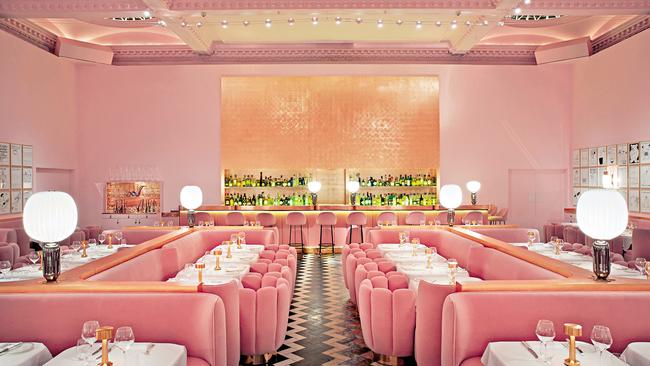
“People are afraid of colours. They get shy with colours. I get shy with people, not colours,” Mahdavi says as we talk in her book-strewn sitting room.
Mahdavi’s upbringing was unusual and the more you talk to her the more you realise that it is the cornerstone of her colour and design aesthetic.
As a child, Mahdavi was constantly on the move. She was born in Tehran – her father Iranian and her mother Egyptian.
When Mahdavi was two, the family moved to the USA after her father received a grant from Harvard University.
The pop of colours in television cartoons and Disney’s The Jungle Book made a lasting impact.
In 1968, the family headed to France but a last minute hitch scotched the plan and they ended up in Germany.

“When you move all the time you are always the foreign element so you have to have a high level of adaptability,” Mahdavi says.
“There was always the barrier of language so my visual memory and sight became my main way of observing, analysing and integrating.
“In the United States in the mid-60s I remember the colour television being the main element of my life.
“But when we moved to Heidelberg (Germany) suddenly my life went from colour to black and white.
“There was such a big difference. The light was very different. I was a bit (unhappy there).
“But then we moved to the South of France and the light started coming back to me. When you change languages – English to German to French – it takes time to learn.
“It was natural for me to express myself through drawings and art. I channelled my sensibility in that direction.”
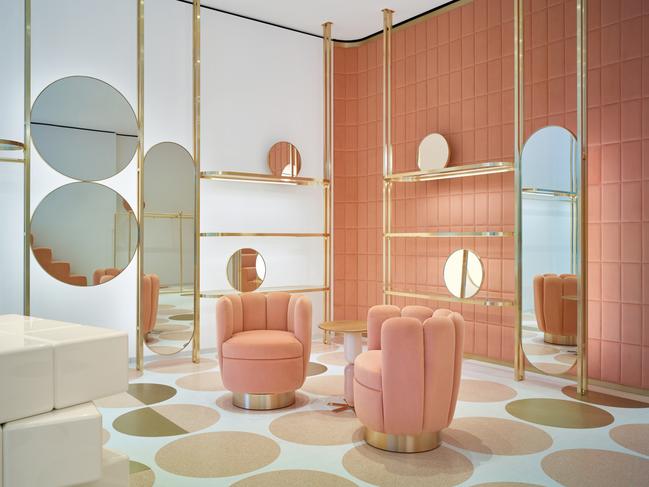
Mahdavi went on to get an architecture degree in France and went to New York to study graphic design, industrial design and furniture design.
A seven-year stint as artistic director for Christian Liaigre, renowned for luxury minimalism in black, tan and cream didn’t hint at the colour explosion that would happen when Mahdavi went solo.
Tod’s and REDValentino stores, suites at Claridge’s, bars at The Connaught, a refresh of the Monte Carlo Beach Hotel, Laduree confectioners in Los Angeles, Tokyo, and Geneva are just some of the projects since.
“Colour has become a language for me – an expression,” Mahdavi says.
“The colours I choose always follow a meaning. It is not just about being beautiful. There is something very energetic about it. It is joyful. I love it because it brings light to a room.”
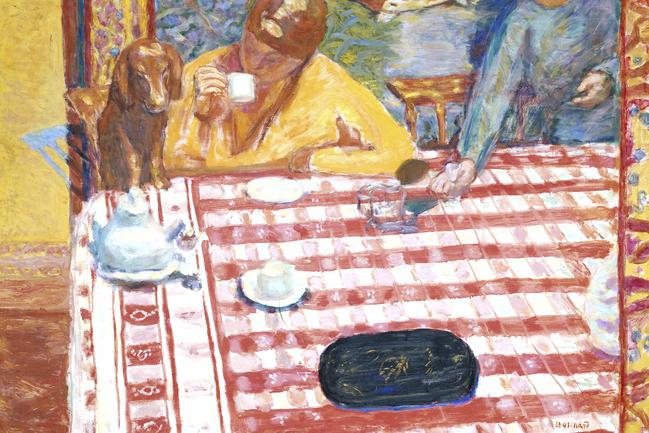
It is that notion of bringing light to a space that links Mahdavi to Bonnard, who was famed for his paintings of interiors, often featuring wife and muse Marthe.
Bonnard was born in 1867 and died in 1947, a generation after Impressionists Claude Monet and Pierre-Auguste Renoir. He was a friend and contemporary of Henri Matisse and the pair shared an admiration for one another’s work.
Bonnard’s family wanted him to be a lawyer and he got his law degree in 1888 but his heart wasn’t in it. Instead he took up studies at Paris’ Ecole des Arts Decoratifs and the Academie Julian.
“I wanted at all costs to escape from a monotonous existence,” Bonnard is quoted as saying.
Bonnard and artist friends including Maurice Denis and Edouard Vuillard founded the Nabis whose highly decorative posters, prints and wall decorations were influenced by Japanese woodblock prints.

Parisian street life was another early source of inspiration for Bonnard but in time he concentrated on everyday domestic life, particularly when he and Marthe moved to Le Cannet in the south of France.
With Bonnard’s complex brushwork, images of Marthe bathing, setting the dining table, or taking tea become mesmerising visions of luminescence.
“What I love about Bonnard is that he invites you into his home at a period when nobody (artists) did that,” Mahdavi says.
“It is very intimate. He is showing you his bathroom, his wife. It is how he transcended his home and his life. He painted the same room (multiple times) but there is not one painting that has the same colour of the same object.”
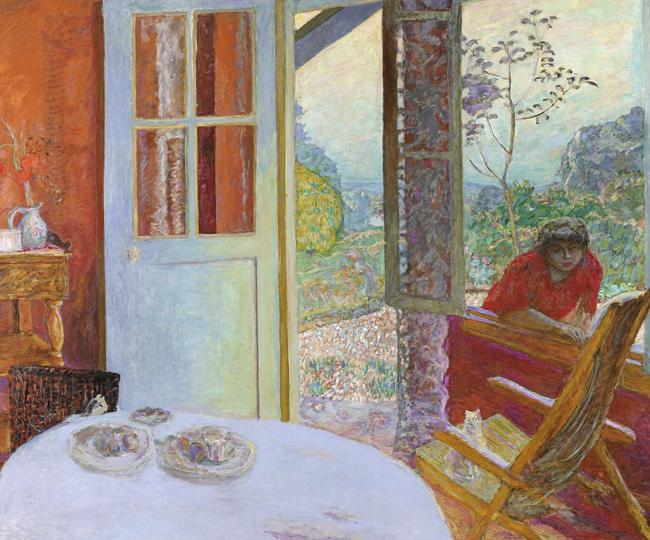
Mahdavi’s work is just as distinctive. You can see Iran, those early childhood experiences in the USA, and even the Orient informing her design aesthetic.
“What is interesting about Iran and the Orient is that there is comfort (in furnishings),” Mahdavi says. “I like roundness. I like softness. Even if I do something that is straight and angular then I am going to give it softness like using velvet. And there (Iran and Orient) there are no preconceived rules about what should be done (interior design). There is total freedom of association.
“It is free-spirited and that is what I like in my work. A lot of creativity is about putting things together that you’re not used to.
“Bonnard uses all of these different patterns – the wallpaper, the floor, a tablecloth, a piece of sky.
“That is what my treatment for the NGV exhibition is really about. I am trying to create an immersive experience for the visitor.”


